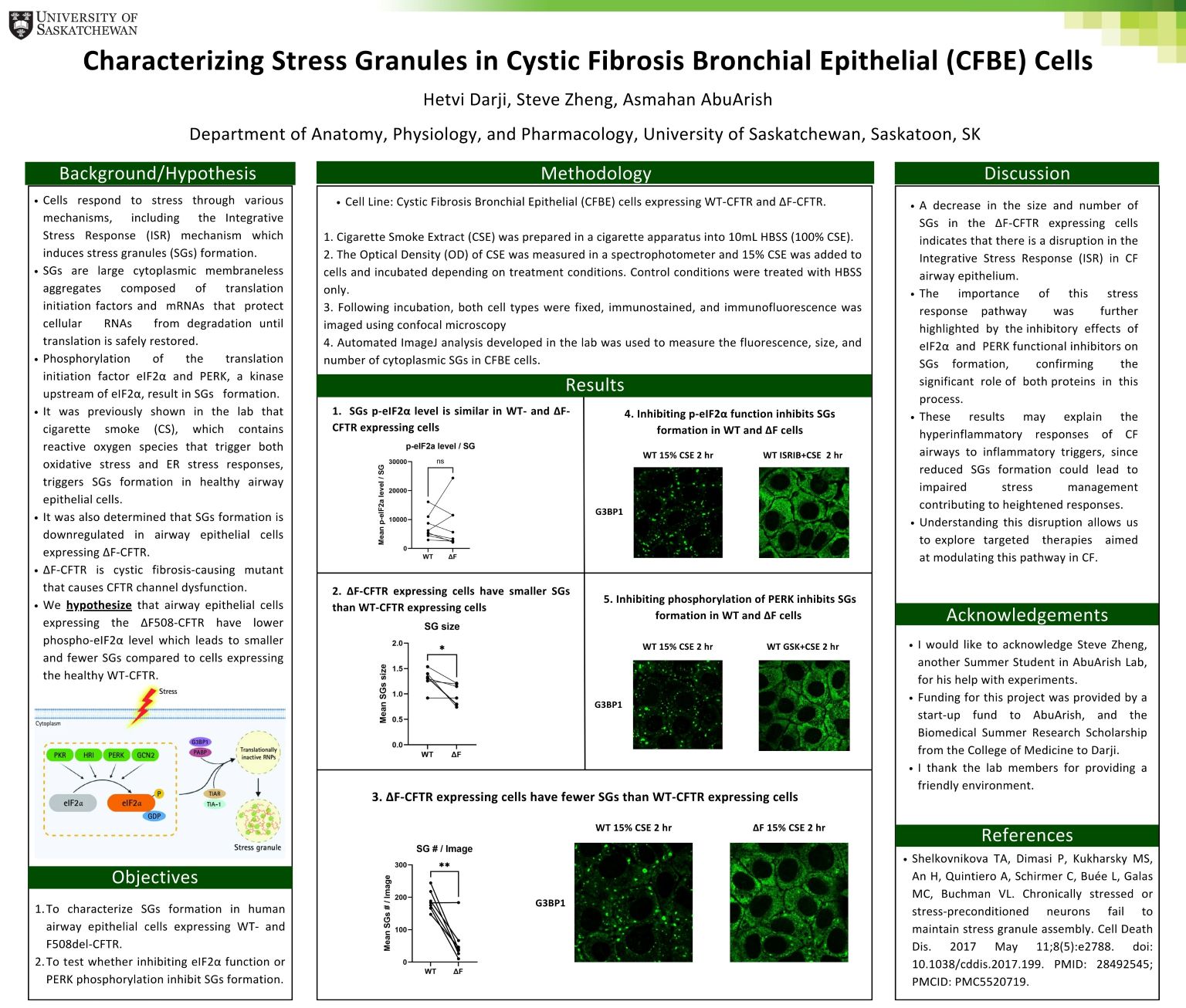
Characterizing Stress Granules in Cystic Fibrosis Bronchial Epithelial (CFBE) Cells
Hetvi Darji
To protect against stress, cells activate protective mechanisms such as the integrated stress response (ISR) by phosphorylating the eIF2α (p-eIF2α) resulting in stress granules (SGs) formation. SGs sequester proteins and mRNA to inhibit general protein synthesis to help cells cope. It was established in the lab and for the first time that cigarette smoke (CS) exposure induces robust SGs formation in healthy airway epithelial cells but not as well in cystic fibrosis (CF)-related cells. This can potentially explain some aspects of hyperinflammation in CF airways. In this project, we characterize SGs formation under CS exposure in healthy and CF-related cells treated with different inhibitors of the ISR pathway. To characterize SGs, we use ImageJ code to measure their individual size, number of SGs per cell, and the level of phospho-eIF2α (p-eIF2α) incorporated into every SG. Our analysis shows there are fewer and smaller SGs in CF-related cells, and they incorporate less p-eIF2α. Inhibiting the effect of p-eIF2α in healthy cells using ISRIB inhibits SGs formation. Inhibiting the phosphorylation of PERK which is upstream of eIF2α also halts SGs formation. This demonstrates that the PERK/eIF2α pathway is responsible for SGs formation in healthy airway epithelium which is disrupted in CF-related epithelium.
